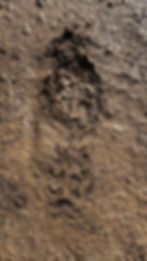
The search for a missing person is a time-sensitive emergency.
From the time they are last seen there is normally a delay before there is a realisation that the person is missing, triggering a sequence of actions. This includes possible initial searches by friends, family or carers, reporting to the police, who create an incident log with initial information and grade the incident before allocation of police officers for enquiries.
Initially the missing person's home address or location they were last seen is checked. An assessment is made based on the scenario and if deemed necessary, additional volunteers search teams may be called to search. The availability of volunteer team members and the time it takes them to travel to the scene also factor in.
Each stage takes time, and the length of time for each stage is widely variable.
The clock is ticking throughout, underlining the urgency of the situation.
Clues/evidence of physical presence moves the search focus from speculative areas, toward the subjects travel corridor. But clues do not have to be confirmed sightings, CCTV captures, electronic devices or transactions, which to be frank have their limitations in rural Cornwall or with some categories of missing person.
The average fit and healthy adult steps approximately every 78cm… roughly 1,280 steps every kilometre, on flat even ground in good light.
If a subject is a child, elderly, physically, medically or emotionally impaired, disoriented, dehydrated, tired, fatigued, substance impaired or injured, travelling up or down hill, the ground is uneven, slippery or vegetated, the weather is poor or in hours of darkness, there will be far more than 1280 steps per km not to mention other sign.
Finding just one significant clue provides a direction of travel which focusses the entire search:
To put the right resources in the right place, promptly and safely.
Tracking or sign cutting can be deployed in a number of ways, primarily:
Inclusively by identifying the route taken by the subject, to enable search personnel or resources to be concentrated into a higher
probability sector rather than meticulously searching the entire 360° radius from the place the person was last seen.
Exclusively by identifying areas or routes that have had no human presence in the related time period, enabling search managers to focus resources on more likely areas. This can be through probing possible routes for evidence of any human sign or perimeter cutting an area for sign crossing into it.
This technique can be of particular benefit in hazardous locations, such as coastal cliffs, abandoned quarries or mine workings, being able to avoid inherent dangers when committing technical rescue personnel to high risk environments unnecessarily.
On arrival on scene with most recent subject details provided, we can deploy instantly with no need to await formation of any search strategies, arrival of equipment or vehicles, team allocations or search area designations.
We travel light and therefore fast.
OUR AIM: is to aid the Police and local Search And Rescue Teams promptly and efficiently find missing
persons by locating and interpreting physical evidence at as early a stage as possible in the search.
Tracking is not cost prohibitive and is fully complimentary to existing UK SAR practices. The use of trackers or sign cutters is specified in a number of search management publications used as the basis for most UK land based SAR. It is a skill that is utilised effectively in most other developed and less developed countries in missing persons incidents.
How do you find a needle in a haystack?
Trackers follow the thread.



















